The stock market just staged one of the strongest rallies in history, climbing more than 30% in a matter of weeks.
However, the sad thing is that many retail investors have missed out on this fantastic rally the last 30 days. Why? Because many retail investors would have sold somewhere near the bottom from the fear that it's going to go lower.
“The depression is coming!”
“The market's going to crash as bad as the financial crisis!”
And the moment they sell, what happens? The market goes up. But do they buy it back straight away? No. Because they keep reading that there's going to be another crash. They say they’ll buy it back when it goes lower but it just keeps going up.
Next thing you know, the market’s up more than 30% and they’re left behind… again.
As a retail investor, you can make tremendous profits investing in the stock market and watching your wealth compound. The reason most people don't achieve this is because they don’t do what professional investors do - buy stocks during a recession.
But once you understand this investing secret and appreciate why you should buy stocks during a recession, you can turn around your financial future. In this article, I’ll be sharing with you just that.
Selling Stocks When A Recession Starts
One of the most common mistakes investors tell me is that they sell stocks when a recession starts.
They anticipate when the stock market is going to go down by watching the economic news. And you just can't do that.
Why? Because always remember this, the stock market is not the economy. They are two totally different animals.
The stock market is in fact a leading indicator of the economy. It doesn't care where the economy is now or next week or next month, but rather always anticipates what's going to happen in the future.
Stock Market Cycle VS Economic Cycle
Let’s take a look at this chart below.
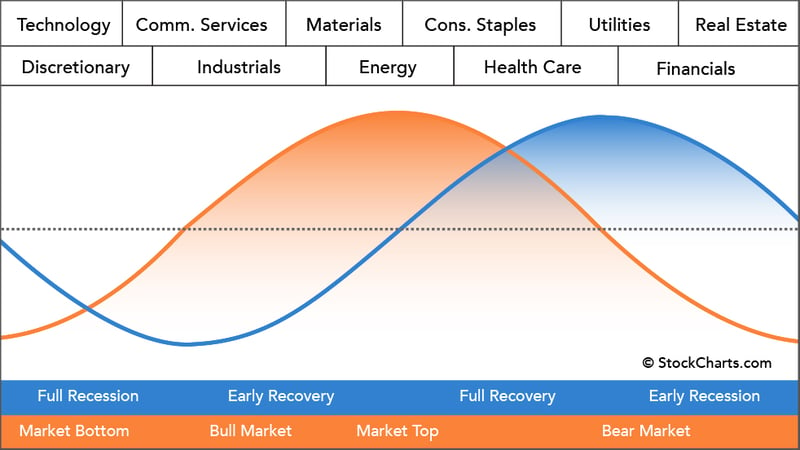
Stock Market Cycle VS Economic Cycle
Source: StockCharts.com
The orange line that you see here is the stock market cycle where you can see the market bottom and market top. And obviously as an investor, when do you want to buy? You want to buy at the market bottom and sell at the market top! Buy low, sell high!
But notice something interesting. The blue line represents the economic cycle and the economic cycle moves very differently. Observe that when the stock market is at the bottom, what's happening to the economy? That’s right, the blue line is going into a recession. So the best time to buy stocks is at the market bottom when the economy is going into a recession.
You don't sell stocks when the recession starts, you buy stocks during a recession or right when the recession starts!
Right now, the trouble with most investors is they do the opposite. They sell when the recession starts and by doing that, they’re selling at the market bottom, which is why most investors sell low.
Now, when do most retail investors buy? They buy when the economy is doing well. But notice what's happening when the economy (blue line) starts to recover? They are buying almost right at the market top!
Hence, most retail investors always buy at the top and sell at the bottom, and that's why they always lose money.
Lets take a look at some examples of economic news in the past few weeks.
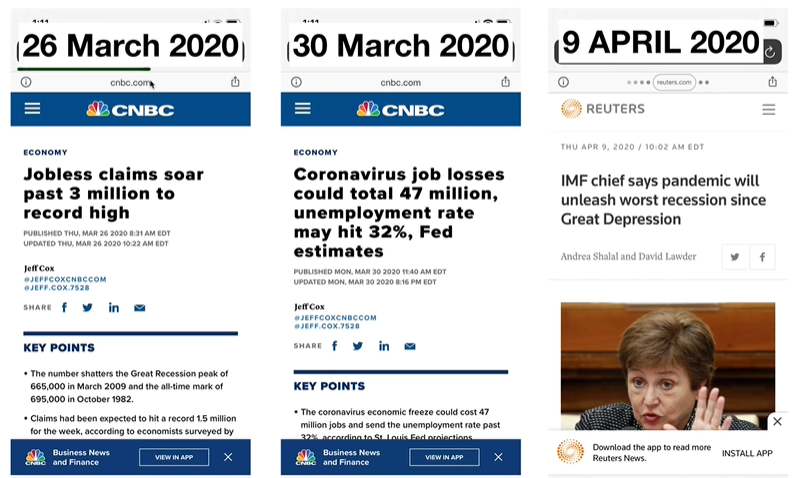
Why The Economic News Does Not Reflect The Stock Market
Source: CNBC, Reuters
So all this tells us the economy is in shit. The economy is in big trouble. So what do you think most retail investors do? They sell.
So now that you know this, what should you do as a professional, smart investor? That’s right, you buy stocks when you see negative economic news because when you see this negative economic news, it means the market has bottomed.
And sure enough, take a look at the charts below and you’ll see that during these dates mentioned above, the market went up. That's when the market bottoms and the bull market begins.
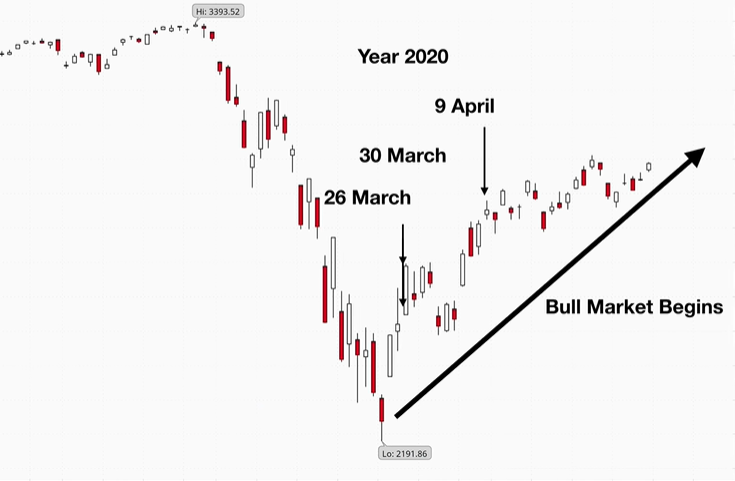
S&P 500 Stock Charts
Source: TD Ameritrade Thinkorswim
So I was buying stocks with all my students when retail investors were selling stocks. You do the opposite of what everyone else does. This is another good example of how the stock market is not the economy.
I have been through seven bear markets and let me tell you something. The movie plot is always the same.
Let me show you the last time this happened. On 3rd April 2009, here's what the news headline said.
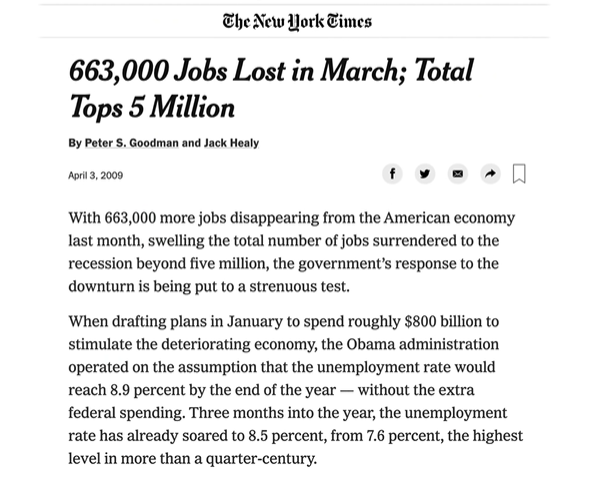
Bad Economic News In The Past
Source: The New York Times
And on 8th May, we have this.
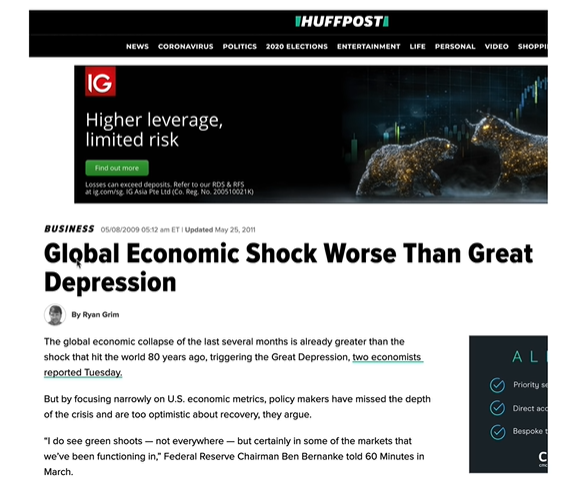
Bad Economic News In The Past
Source: Huffpost
Again, what do you think most retail investors do when they read these news articles?
That's right. They sell, but now you're smarter. What should you do? You buy!
Lets see how that plays out.
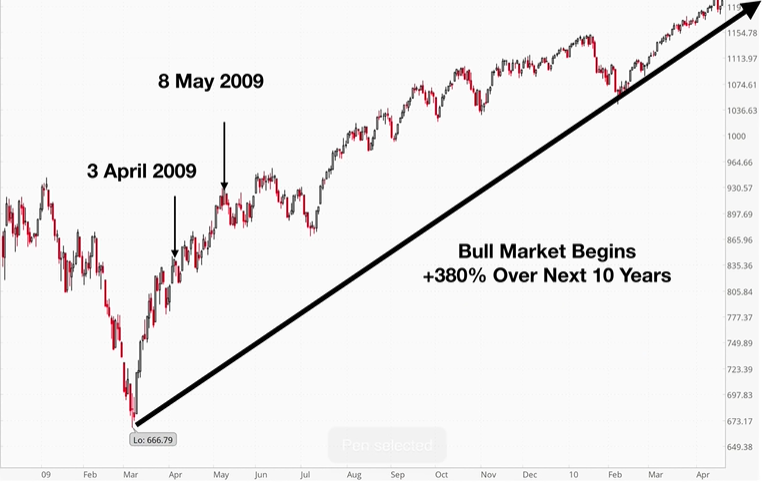
Global Financial Crisis Price Chart
Source: TD Ameritrade Thinkorswim
If you started buying on 8th May 2009, guess what? You would have caught the strongest bull market in history.
From there, the market went up 380% over the next 10 years. So once again, economic news bad, recession hits, we buy stocks because that tells us the market has bottom.
You know the movie keeps repeating itself again and again every number of years. So let's summarize the lesson that we've learned.
Stocks are near the bottom when the economy goes into a recession. So whenever you see recessionary headlines, it’s time to get bullish, it’s time to buy stocks. Not the other way round! Basically, buy stocks during a recession!
What You Should Invest In During A Recession
The other thing to be cautious about is when I say buy stocks, I don't mean buy all the stocks because there are good stocks and there are lousy stocks.
There are 2 things you can invest in during a recession. The first is you can buy high quality companies that have got strong balance sheets and strong earnings, and these are the things that you’ll learn in the Value Momentum Investing™ course where I teach you how to find high quality companies.
Alternatively, you can also invest in index funds during a recession. Basically, buy the index because the index always goes up in the long run, like the S&P 500 index or the Dow Jones index ETF.
Please avoid lousy companies with weak earnings and weak balance sheets because if you buy these stocks, they will not recover.
Does That Mean To Sell Stocks During An Economic Boom?
Conversely, when the economy has fully recovered and you read all kinds of good economic news like low unemployment rates, booming economy, be careful! That means that stocks are near the top. So time to get cautious and time to start selling some of your stocks that are way overvalued.
Alternatively you can buy put options like what I do to profit when the market begins to reverse into a correction.
But wait, here's the thing. You can't always predict the exact top. No one knows the exact top. Just because you read good economic news does not mean you should sell immediately. It does not mean you short the markets because you can't predict exactly when it's going to happen.
It could happen in one month, two months, three months, no one can predict. So I always wait for the technical charts to confirm the reversals by looking at the price action or moving averages. These are all taught in my Value Momentum Investing™ course as well but just to give you a rough idea, here’s an example.
So in this case below, you can see that the reversal from the bull market to the bear market was nicely confirmed by the moving averages, where the 50 moving average crosses below the 150 moving average. The blue line crossing below the green line and both moving averages are sloping down. This shows a technical reversal pattern.
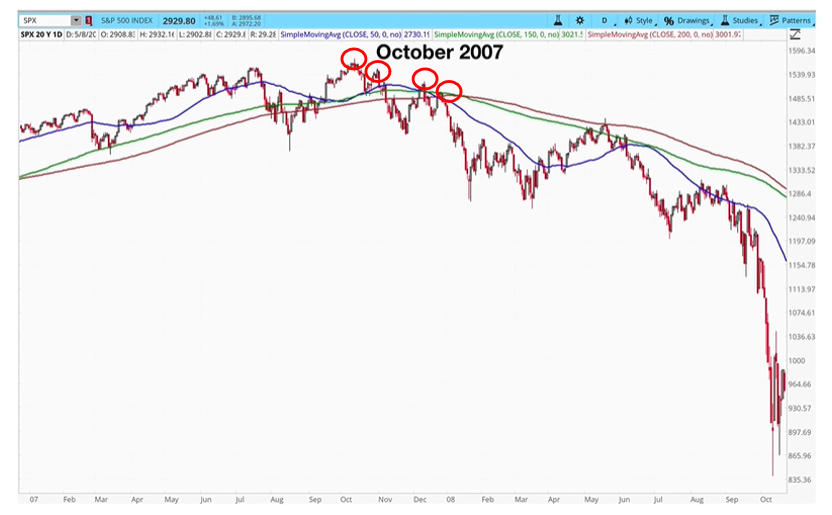
Global Financial Crisis Price Chart
Source: TD Ameritrade Thinkorswim
At the same time, base on price action, we also see lower highs (as indicated). When you get four lower highs in a row that is also a change in trend signal, so that will be a time to sell stocks to short the market or buy put options to protect your portfolio.
On A Last Note
Most people lose money in the stock market because they fail to focus on the business itself but rather on the economic news and noise.
By learning that the economic news does not reflect the stock market, you now know the investing secret most retail investors don’t - to buy stocks during a recession. A recession is the best opportunity for stock investors to build up their wealth by buying great businesses at huge discounts.
It’s Adam Khoo here and may the markets be with you.



submit your comment